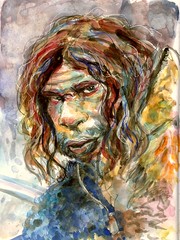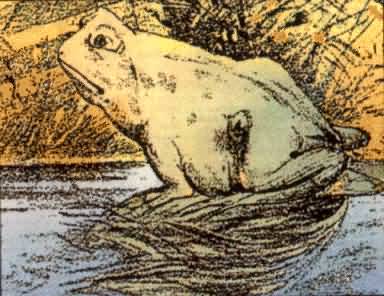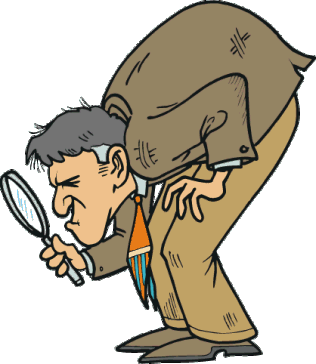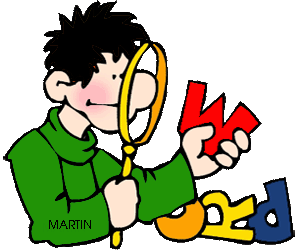Labor Day, 2015
. . .celebrating the dignity of work
"Labor Day, the first Monday in September, is a creation of the labor movement and is dedicated to the social and economic achievements of American workers. It constitutes a yearly national tribute to the contributions workers have made to the strength, prosperity, and well-being of our country." 1.
"Labor Day, the first Monday in September, is a creation of the labor movement and is dedicated to the social and economic achievements of American workers. It constitutes a yearly national tribute to the contributions workers have made to the strength, prosperity, and well-being of our country." 1.
Why do Americans and Canadians celebrate Labor Day?
- Kenneth C. Davis
- Kenneth C. Davis
Read more about the history of Labor Day HERE.
**********************
Go HERE to view History.com's
9/11 video archive.
-- TRIBUTE IN LIGHT --
illuminating the Manhattan skyline annually in commemoration of 9/11
********
ASSIGNMENTS FOR
THE WEEK OF
SEPTEMBER 8-11
SCIENCE
For starters, let's talk about
SCIENTIFIC INVESTIGATION
 We introduced the Scientific Method last week through a series of observation activities, remember? We explored some way-cool optical illusions and brain-stretching activities. There was method to my madness. (Get it? METHOD?) You see, "observation" is the cornerstone of scientific inquiry. It's were all the investigations begin and it is the continuous thread that follows the process to its conclusion.
We introduced the Scientific Method last week through a series of observation activities, remember? We explored some way-cool optical illusions and brain-stretching activities. There was method to my madness. (Get it? METHOD?) You see, "observation" is the cornerstone of scientific inquiry. It's were all the investigations begin and it is the continuous thread that follows the process to its conclusion.
FYI: Don't confuse observing with seeing. Scientists don't simply watch, they actively engage in a process of figuring things out--of interpreting and reflecting upon what they experience. Observation is a powerful tool that helps us figure out how the world works.
When we make observations, our brains immediately begin the process of gathering evidence, organizing ideas, and developing explanations (a.k.a. hypotheses) of a phenomenon. How scientific of us! Of course, then we have to see if we're right (which is the testing part); that's where it gets really interesting!
 So anyway, back to optical illusions. (I did have a point to make here!) They're all about perceptions, right? Well, clearly these perceptions aren't always correct. (Is this man just angry or is he a liar?) Sometimes, to make sense of what we observe, our brains are forced to fill in missing or ambiguous visual information, resulting in, you guessed it, inaccurate observations. Well, scientists observed this problem (Get it? Observed?) and developed strategies, tools, and instruments that help improve and even increase human powers of observation.
So anyway, back to optical illusions. (I did have a point to make here!) They're all about perceptions, right? Well, clearly these perceptions aren't always correct. (Is this man just angry or is he a liar?) Sometimes, to make sense of what we observe, our brains are forced to fill in missing or ambiguous visual information, resulting in, you guessed it, inaccurate observations. Well, scientists observed this problem (Get it? Observed?) and developed strategies, tools, and instruments that help improve and even increase human powers of observation.
What do you see, a frog or a horse?
To recap: "Observation consists of receiving knowledge of the outside world through our senses, or recording information using scientific tools and instruments." Oh, and guess what? The data you record during an experiment? It's all (ta-da!) observations!
Talk about Powers of Observation!
I remember seeing this picture on the cover of a 1984 National Geographic. She was one of many Afghan refugees displaced by war and living in refugee camps in Pakistsan. This girl's hauntingly beautiful eyes captivated the photographer. Look at them in this crazy illusion!
~
. . .And now on to our
regularly scheduled activity!
Then. . .
Have some fun with these
INFERENCE RIDDLES!
Now get with a randomly selected partner and follow the directions to complete this activity:
Friday:
Let's take it to the next level by throwing PREDICTIONS into the mix. Test your skill in being able to identify whether something is an OBSERVATION, an INFERENCE, or a PREDICTION. The correct answer follows each slide. What a great activity to do with a friend, a parent, a sibling, your neighbors (providing they're not cranky), or the family dog! Parakeets, not so much. . .
Early Humans Q & A: Find answers to lots of questions about early humans HERE. We'll be discussing these in class, and you may find some of them on upcoming quizzes. . .
LANGUAGE ARTS

Tuesday: What haven't you finished? Book slides? animal slide? "I Can't..." Poem? ABC Autobiography? Get it done!
Wednesday: Found /Parallel Poetry using "Neanderthal Man"
Thursday: Share/Edit/Revise
Found/Parallel Poetry using "Neanderthal Man"
. . .And now on to our
regularly scheduled activity!
Here's a great explanation of the difference between OBSERVATION and INFERENCE. (Very important!) Pay close attention; there will be stuff to do afterwards.
Then. . .
Have some fun with these
INFERENCE RIDDLES!
Now get with a randomly selected partner and follow the directions to complete this activity:
Wednesday: Complete Inference and Observation activity (above)
Thursday: Complete Observation vs Inference worksheet/quiz
Think you have it now? Alrighty then!
Let's take it to the next level by throwing PREDICTIONS into the mix. Test your skill in being able to identify whether something is an OBSERVATION, an INFERENCE, or a PREDICTION. The correct answer follows each slide. What a great activity to do with a friend, a parent, a sibling, your neighbors (providing they're not cranky), or the family dog! Parakeets, not so much. . .
TEST YOURSELF! . . .before I do! (mwaah, hah, hah!)
SOCIAL STUDIES
Early Humans Q & A: Find answers to lots of questions about early humans HERE. We'll be discussing these in class, and you may find some of them on upcoming quizzes. . .
Tuesday: "The First People: Calculating Clues from Bones" activity
Wednesday: Use this Paleolithic Vs. Neolithic Chart to discover some of the similarities and differences between Paleolithic and Neolithic times. Complete this interactive Venn Diagram listing at least five differences and as many similarities as you can find. Save your document to your Drive, and print a copy for me.
Wednesday: Use this Paleolithic Vs. Neolithic Chart to discover some of the similarities and differences between Paleolithic and Neolithic times. Complete this interactive Venn Diagram listing at least five differences and as many similarities as you can find. Save your document to your Drive, and print a copy for me.
- Could you have survived the Ice Age? Go here to find out!
- What wiped out the big beasts? Check here.
- Want to watch a Mammoth Mystery? Check it out!
- Here's a video (with associated links) about Neanderthals. Learn something new!
Friday: Ancient Art:
- The Niaux Cave, located in the northern footlills of the Pyrenees, is one of many in the region and has some of Europe's most impressive Palaeolithic rock art galleries of cave paintings, dating back at least 14,000 years.
- The Lascaux Cave, located in southwestern France is a complex of caves that holds perhaps the most famous Upper Palaeolithic art estimated to be up to 20,000 years old.
- Cave Art from Chauvet, France Oldest art on record--some of them 32,000 years old. Almost perfectly preserved after a rock-slide sealed the cave 25,000 years ago.
LANGUAGE ARTS

Tuesday: What haven't you finished? Book slides? animal slide? "I Can't..." Poem? ABC Autobiography? Get it done!
Wednesday: Found /Parallel Poetry using "Neanderthal Man"
Thursday: Share/Edit/Revise
Found/Parallel Poetry using "Neanderthal Man"
Friday: Complete Found/
Parallel Poetry activity and
copy/paste final draft into Writer's Notebook
(include illustration, color, border).
Tuesday: Testing
Wednesday: Testing
Thursday: Read/listen to "I Discovered Fire" and respond to the questions.
Friday: Complete the questions from yesterday.
CC.6.NS.4: Compute fluently with multi-digit numbers and find common factors and multiples
Tuesday: PICTURE DAY!
Wednesday: Show What You Know (pgs. 6 & 7) corrections and Exit Ticket
Wednesday: Show What You Know (pgs. 6 & 7) corrections and Exit Ticket
Wednesday: Lesson 1.2, Prime Factorization, pages 10-12
Thursday: Lesson 1.3, Least Common Multiple, pages 14-16
Thursday: Lesson 1.3, Least Common Multiple, pages 14-16
Prime Factorization:
Least Common Multiple:
SPELLING
Unit 1, pages 4-7
Labor Day illustration, Remembering 9/11-1, Tribute in Lights, Man with magnifying glass, impossible cube illusion, cartoon eyes, face/liar illusion, frog/horse illusion, girl illusion detective with magnifying glass.2, ob vs inf wkst, predictions crystal ball image, mammoth image, Neanderthal image, reading boy image man with fire, prime/composite gif , Spelling guy
"Labor Day." USA for Kids. U.S. Department of Labor, n.d. Web. 05 Sept. 2015.
Explorable.com (Sep 9, 2009). Scientific Observation. Retrieved Feb 21, 2015 from Explorable.com: https://explorable.com/scientific-observation
Explorable.com (Sep 9, 2009). Scientific Observation. Retrieved Feb 21, 2015 from Explorable.com: https://explorable.com/scientific-observation

















